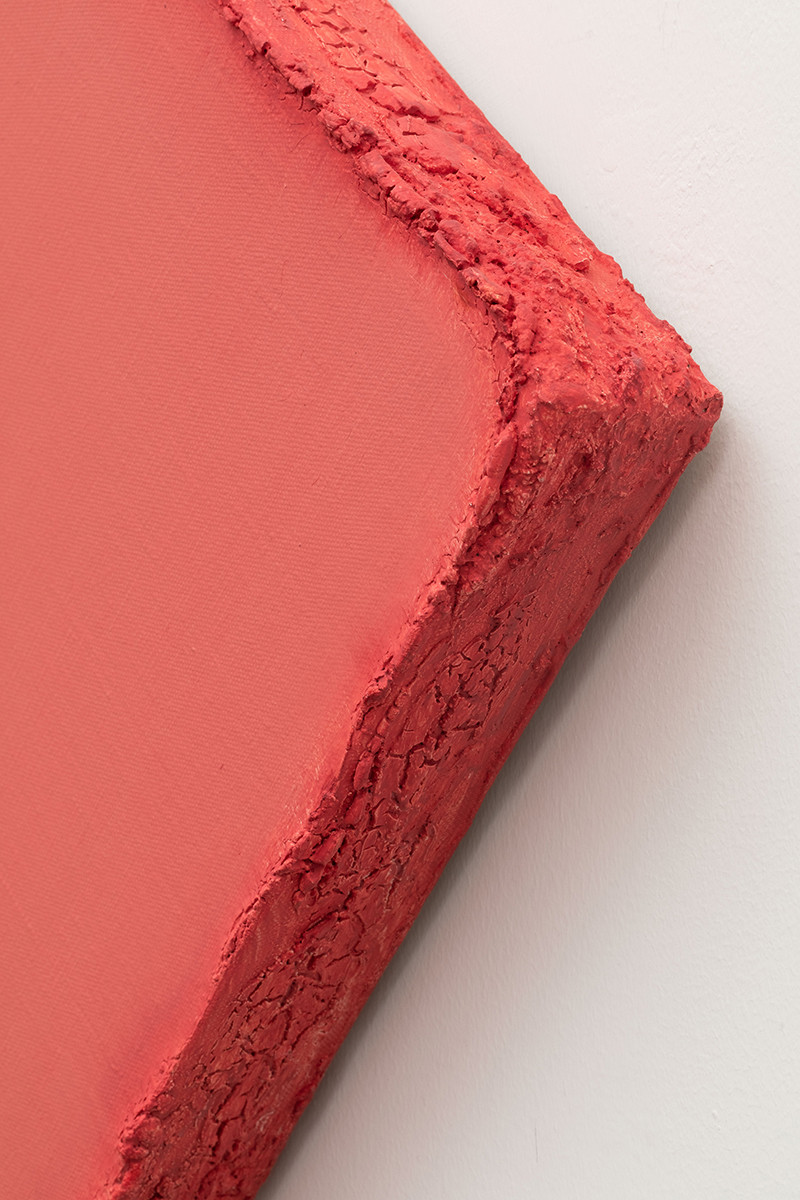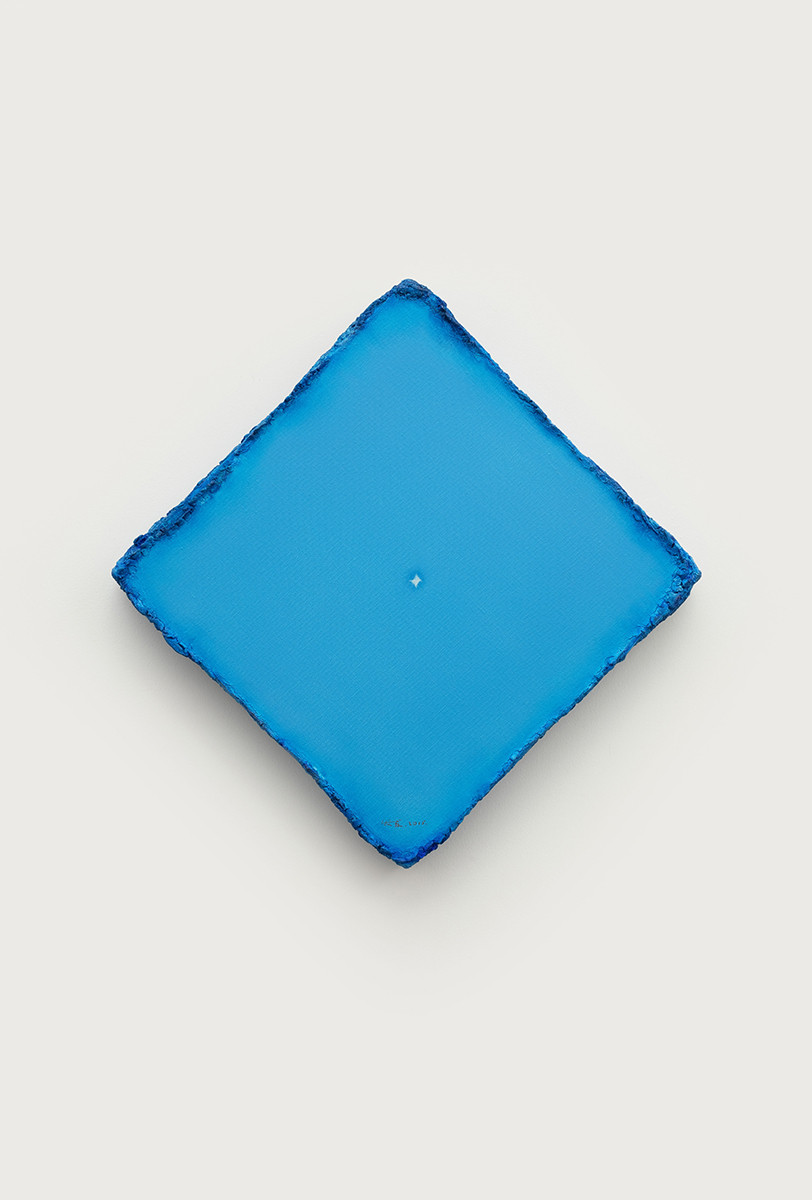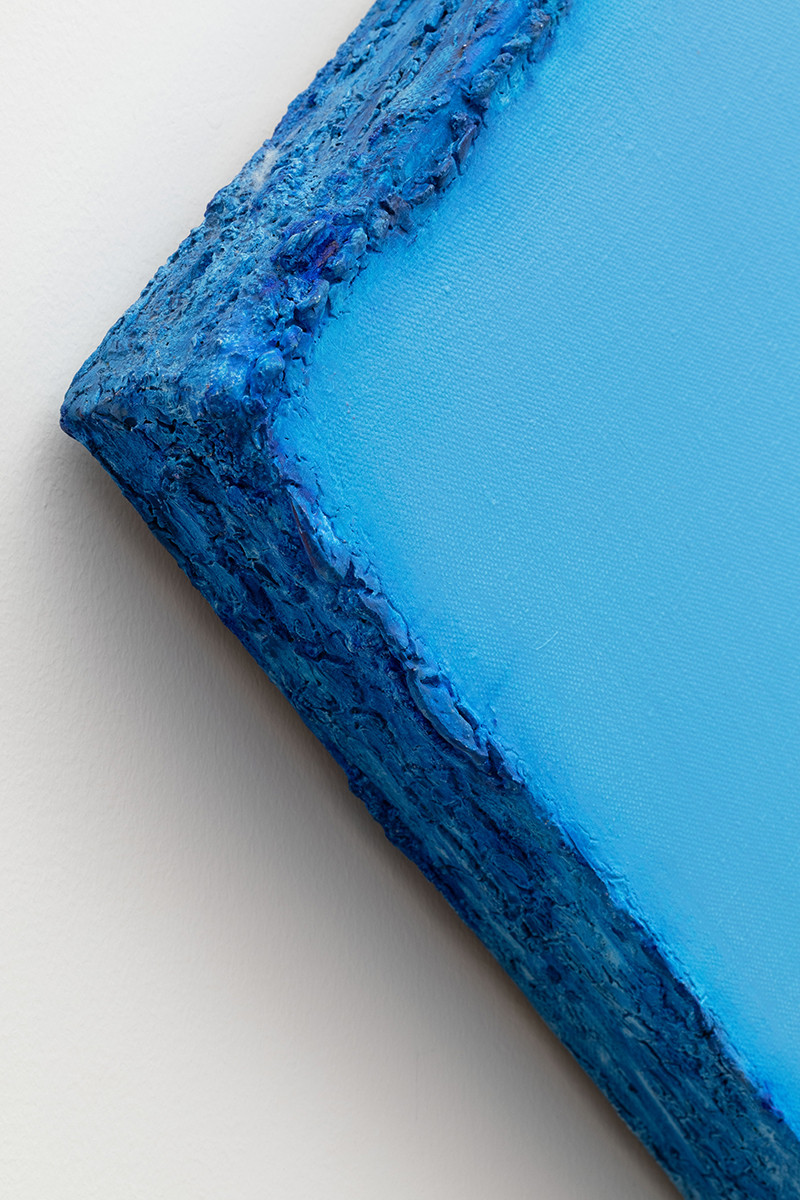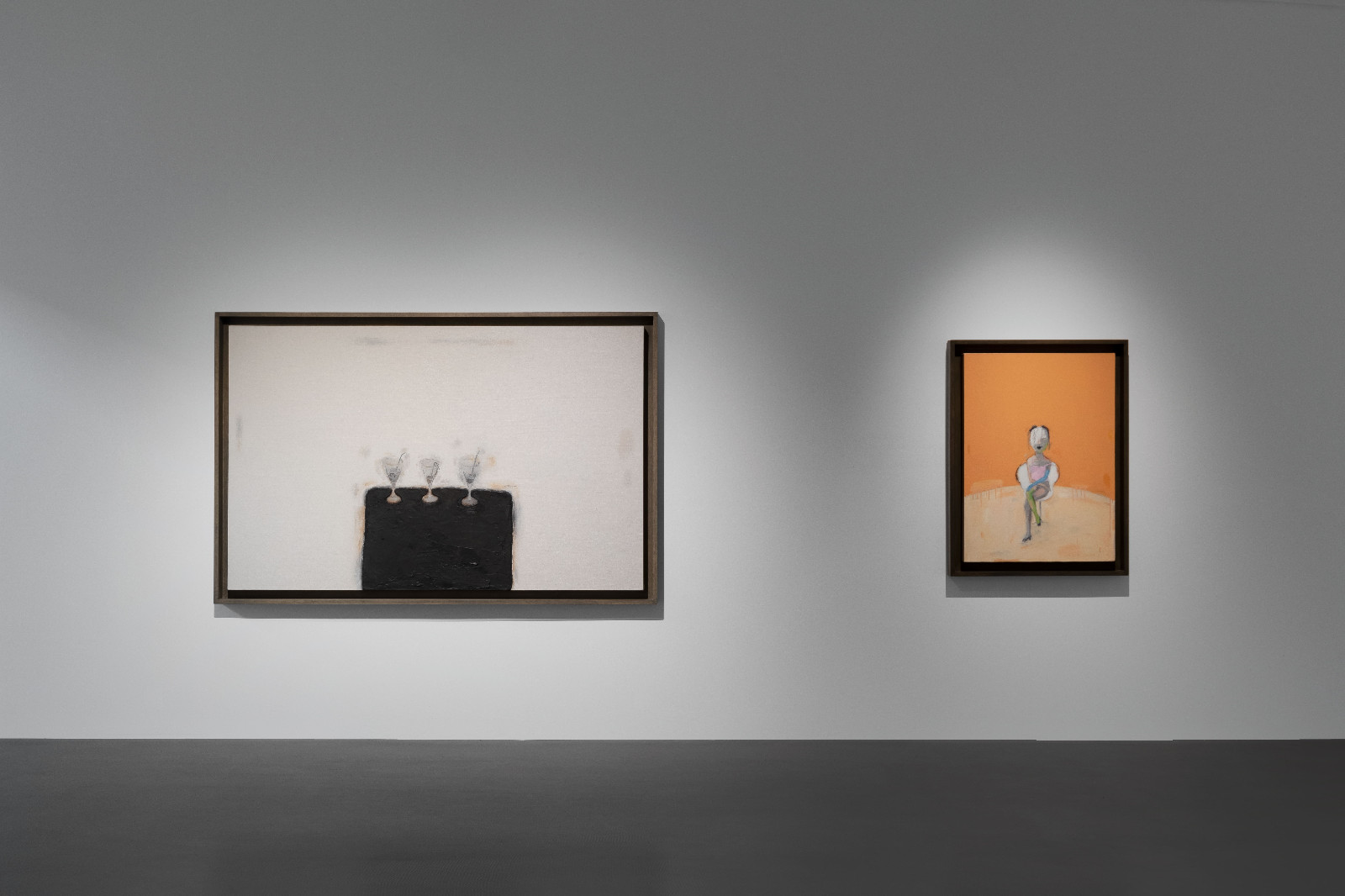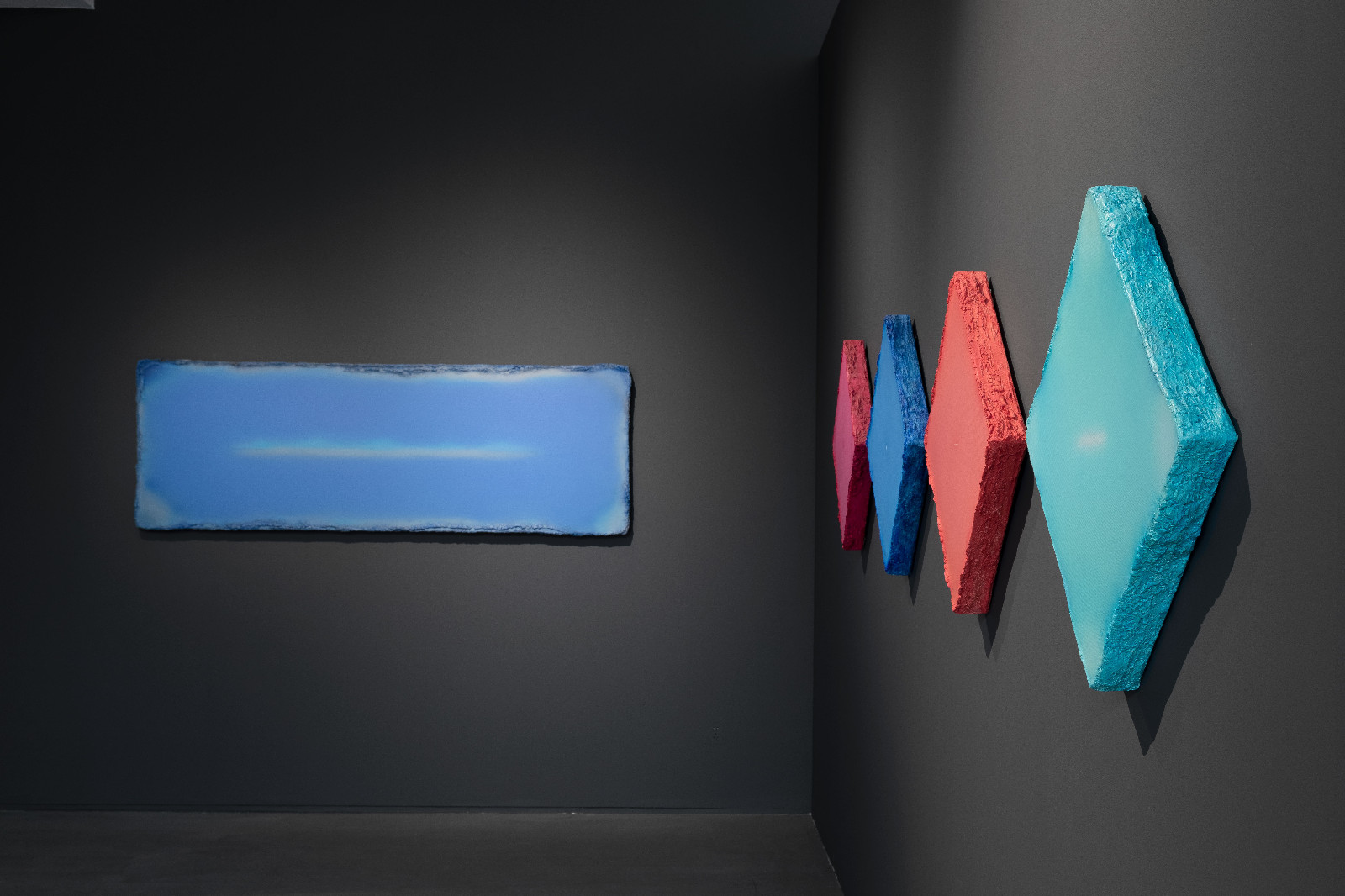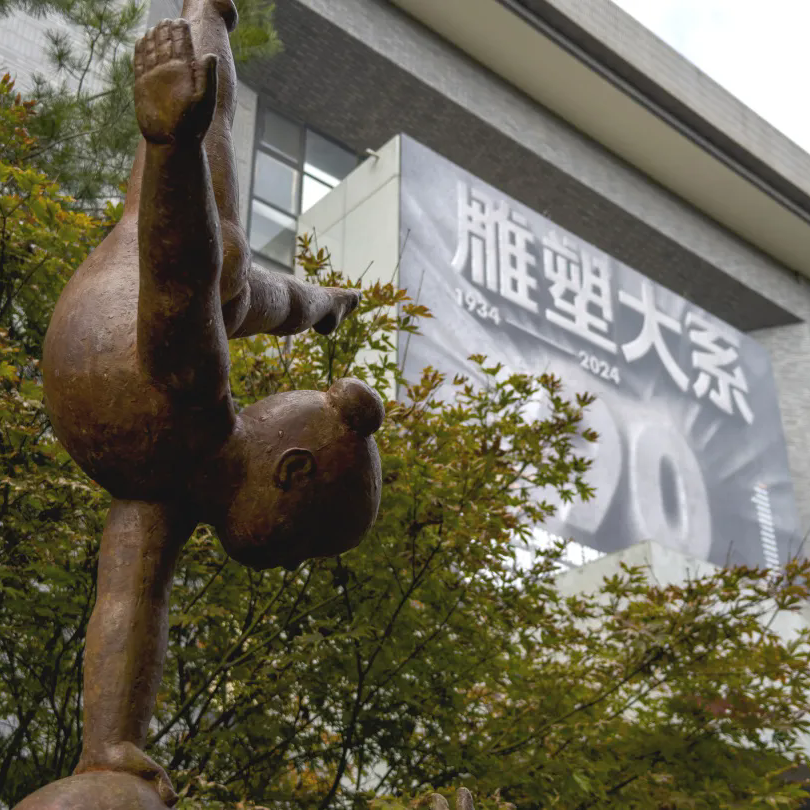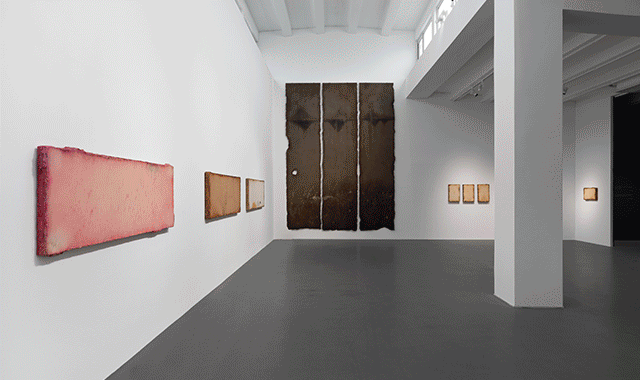
The burnt-like edges, lightly colored playing cards placed in the center of the painting from Chen Shuxia’s new series of work “Winning Cards” from 2020 are showcased in the corner of the Asia Art Center. Compared with the “The Mountain behind” which is more than four meters high and works such as “Three Greens” and “Sinopia” with bright colors, the “Winning Cards” series is not so eye-catching from all the works. However, the series of work reflects Chen Shuxia’s thinking about the world and personal lifestyle during this special period. As the pandemic has re-shuffled the world and changed everyone's lifestyle, in 2020, Chen Shuxia attempts to reexamine the state of being cautious in words and deeds as well as worrying about gains and losses in daily life and has begun to make decisions more "intuitively."
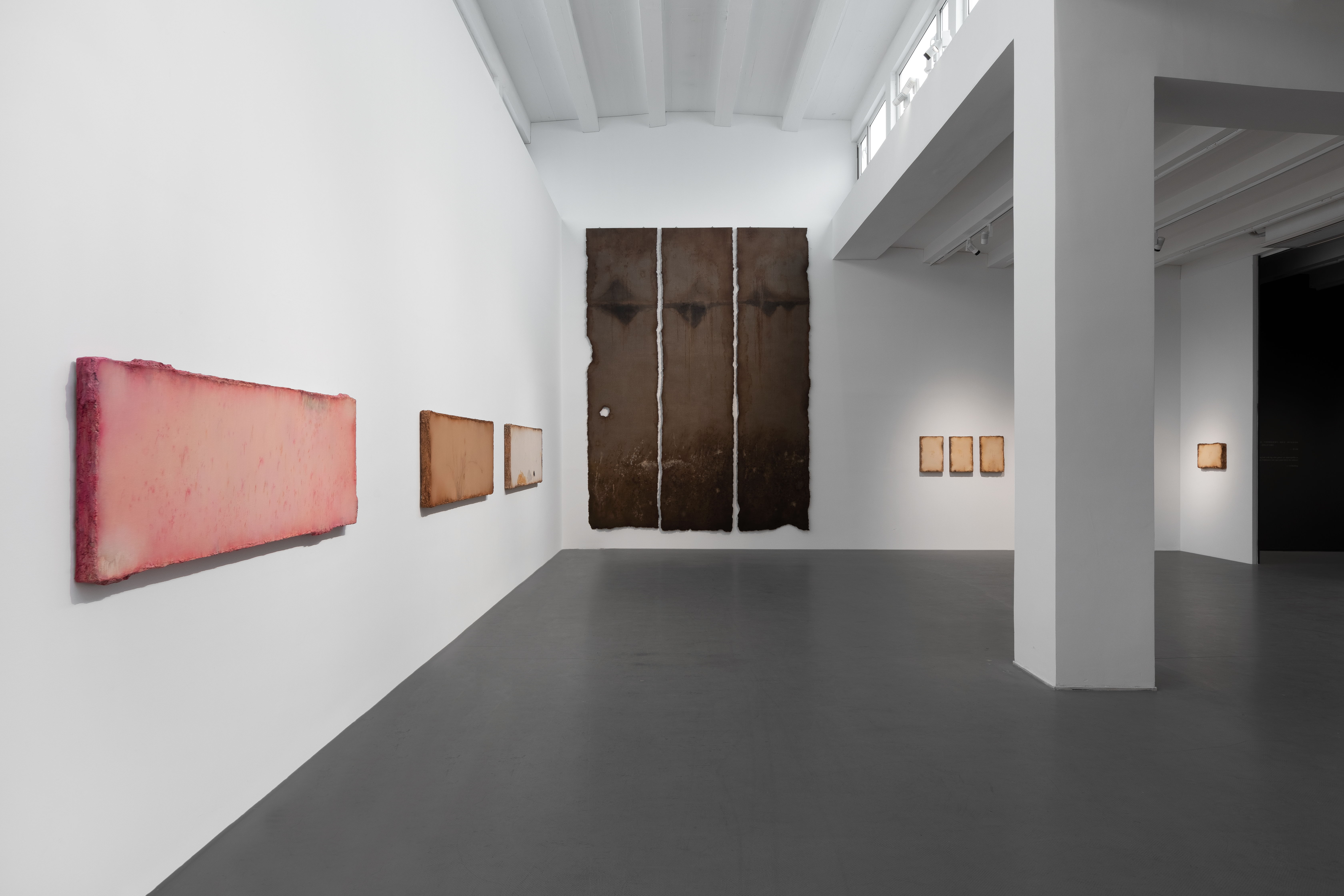
Exhibition View
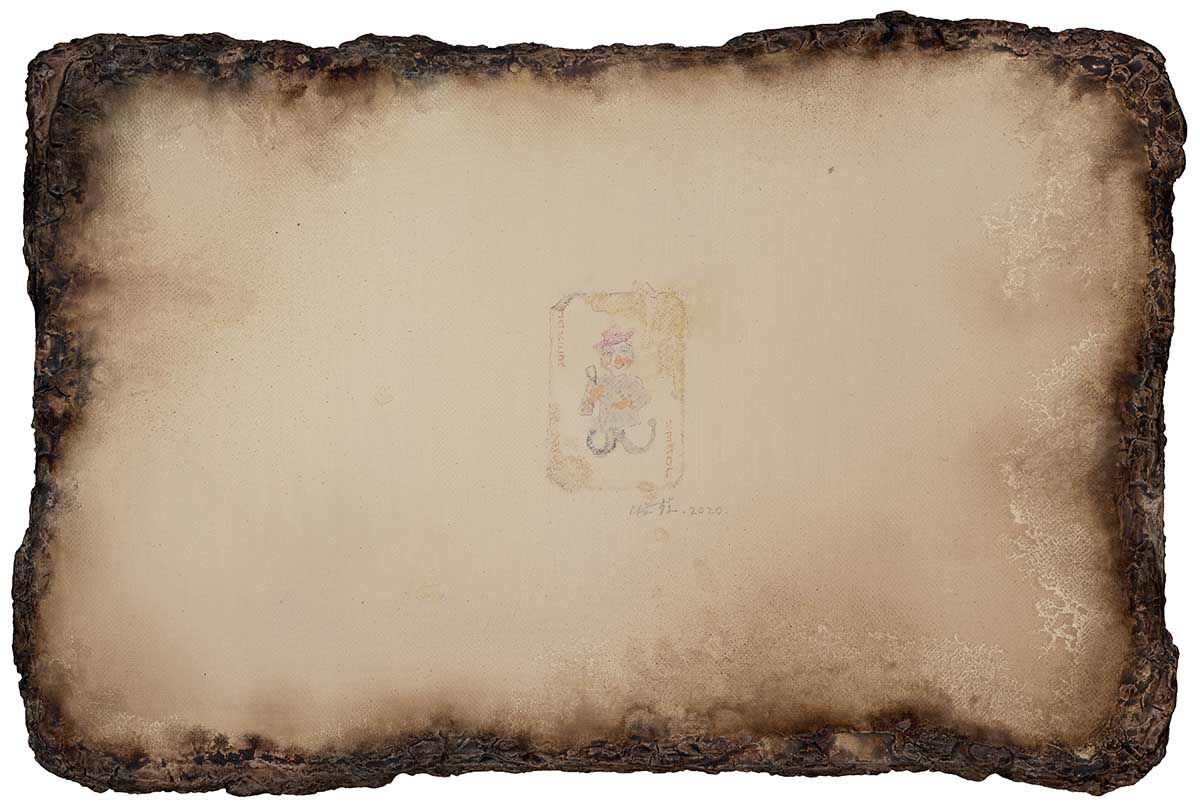
"Winning Cards—Red Joker" 36×56cm Oil on Canvas 2020
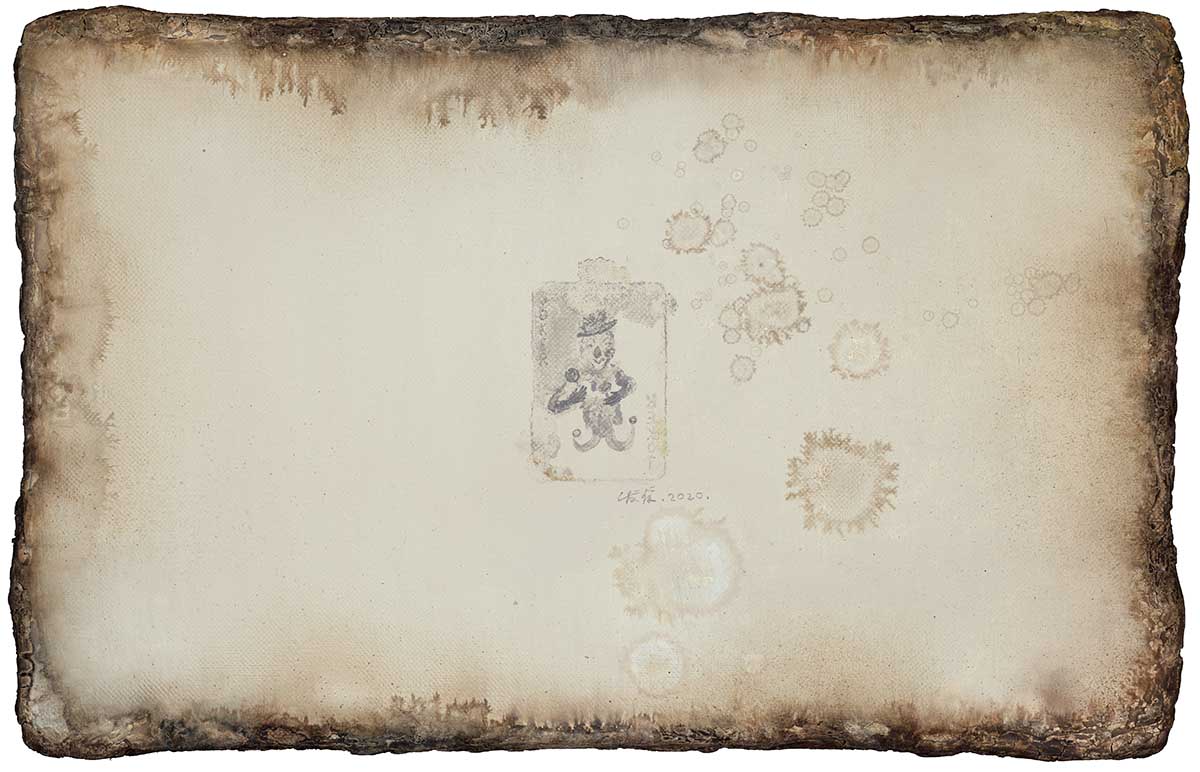
"Winning Cards—Black Joker" 36×56cm Oil on Canvas 2020
Creation
For a long time, Chen Shuxia's painting perspective has been regarded as personal, delicate, and full of perception on life. From the “primary colors” in the 1990s, to “virtual and real”, “within a landscape”, and to the recent representative stages of “being-there” and “the edge”, whether it is a glance of life or the emotions of human beings, or the views of the lake and the mountains, even the color gamut, in Chen Shuxia’s paintings, all create a sense of alienation and loss. Such a feeling usually comes from the artist’s current emotions and reflections of herself as well as present circumstances.
Yin Shuangxi once commented on Chen Shuxia’s creation in the article “Midnight Wind—The Primary Colors of Chen Shuxia": “For Chen Shuxia, life is always a landscape in front of her. As time passes by, the landscape of her childhood has become farther and farther removed but the scenery at present is becoming increasingly clear.” From Chen Shuxia’s perspective, life itself is a scene that needs to take time to be slowly traced and recorded. Regarding the proposition of an art creation, it can be about anything and any aspect of Chen’s life. It is about individual thinking as an artist and it is also the appeal and expression of the common human emotions.
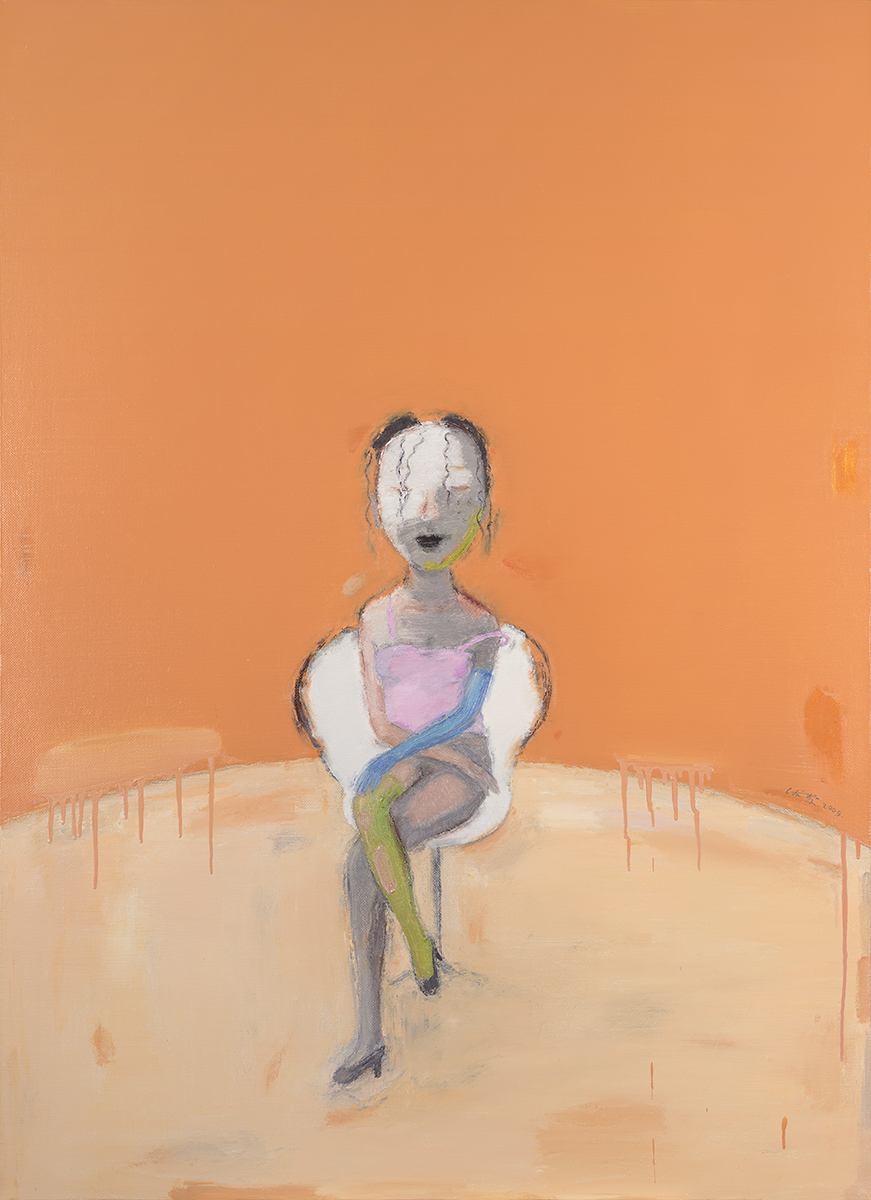
"Idler" Oil on Canvas 110×80cm 2009
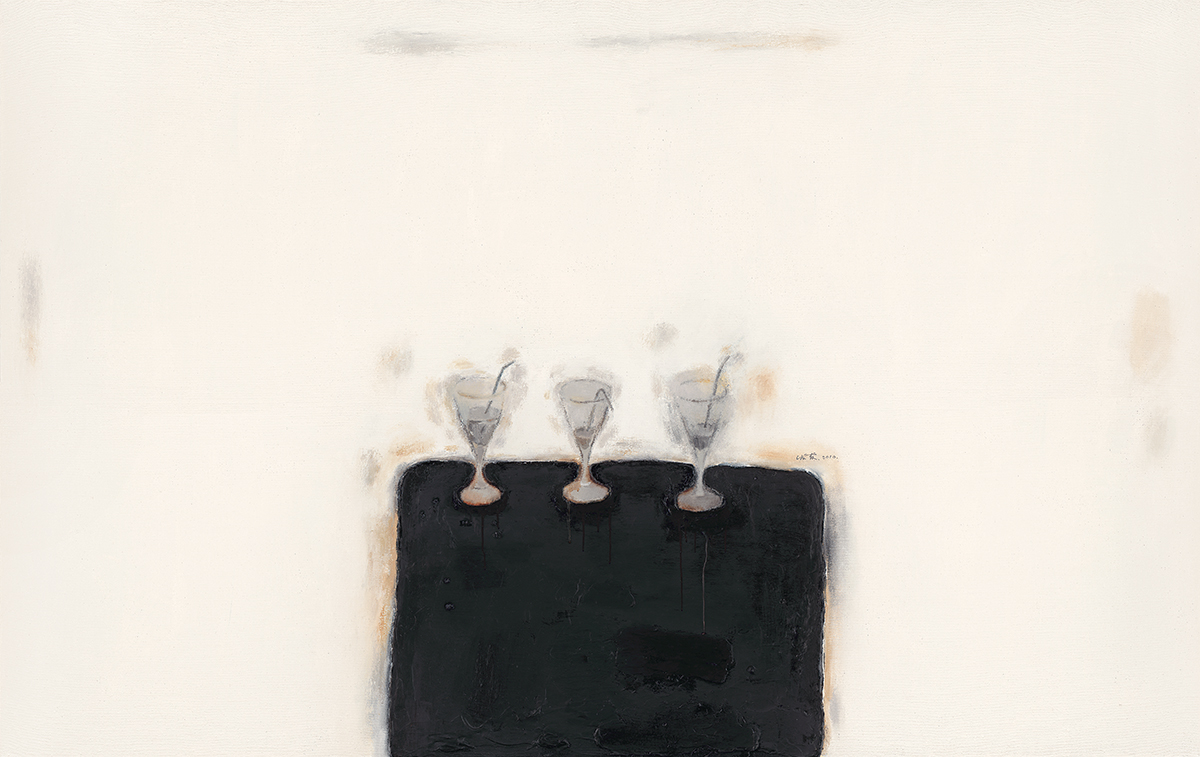
"Three Glasses" Oil on Canvas 140×220cm 2010
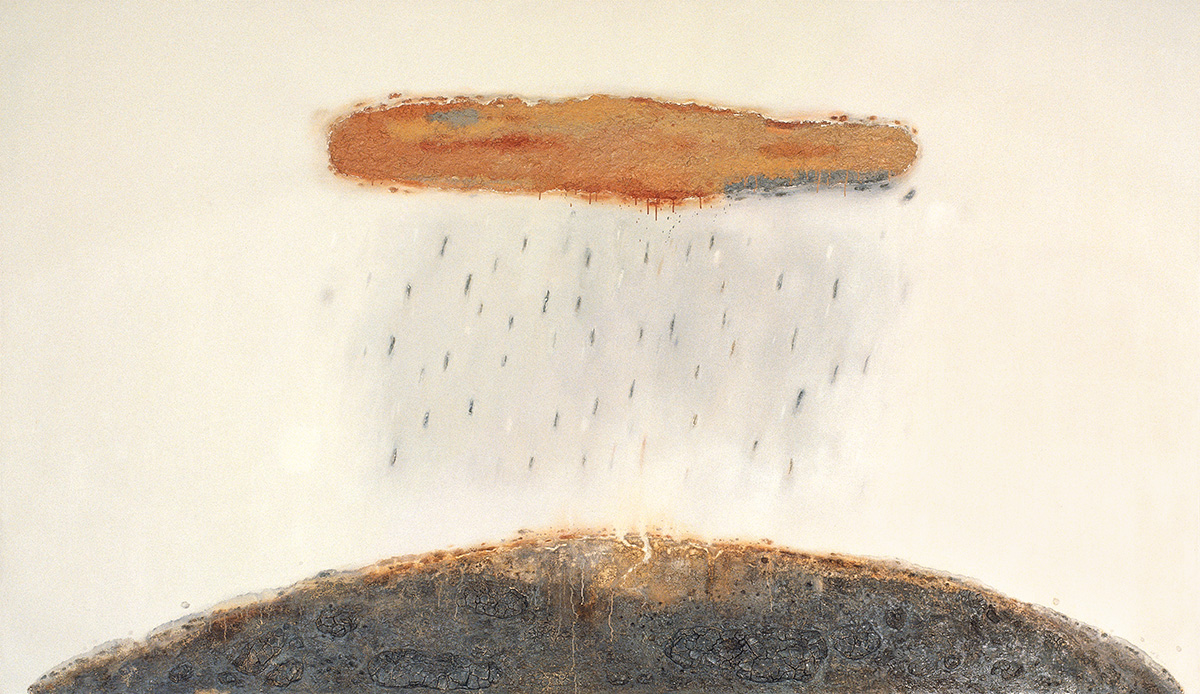
"Shower " Oil on Canvas 210×360cm 2011
An intangible “contradiction” seems to always be hidden in Chen Shuxia’s work, but she makes all these conflicts harmonious in her paintings. Such a “contradiction” may originate from her educational background in the academic system that emphasized the techniques and spirit of realism in the 1980s, and at the same time, she also witnessed the modernist movement in China. In the fierce conflict between the two ideological trends, Chen Shuxia chose to turn to a path that was close to the spirit of traditional Chinese painting. For many years, the possibility of the integration and mutual achievement of oil painting and Chinese painting has been pursued and explored deeply.
Perhaps such a “contradiction” is rooted in Chen Shuxia’s anxiety and sobriety brought about by viewing rapid social development and significant technological progress. It may also come from her reflections on identity, position and behaviors of herself within society.
When this complicated sense of "contradiction" is transferred into the picture, due to the loose composition of elements and light brushwork, the superposition and spread of colors, as well as the blurred edges of the picture, etc., all emotions seem to be covered with a misty tulle. What eventually the viewer receives is a sense of ambiguous sorrow. The complex sense of contradiction allows the audiences who ignore the fragments of daily life to touch the familiarity of normal life but also offers a strange freshness to the very detailed angle of view on life.
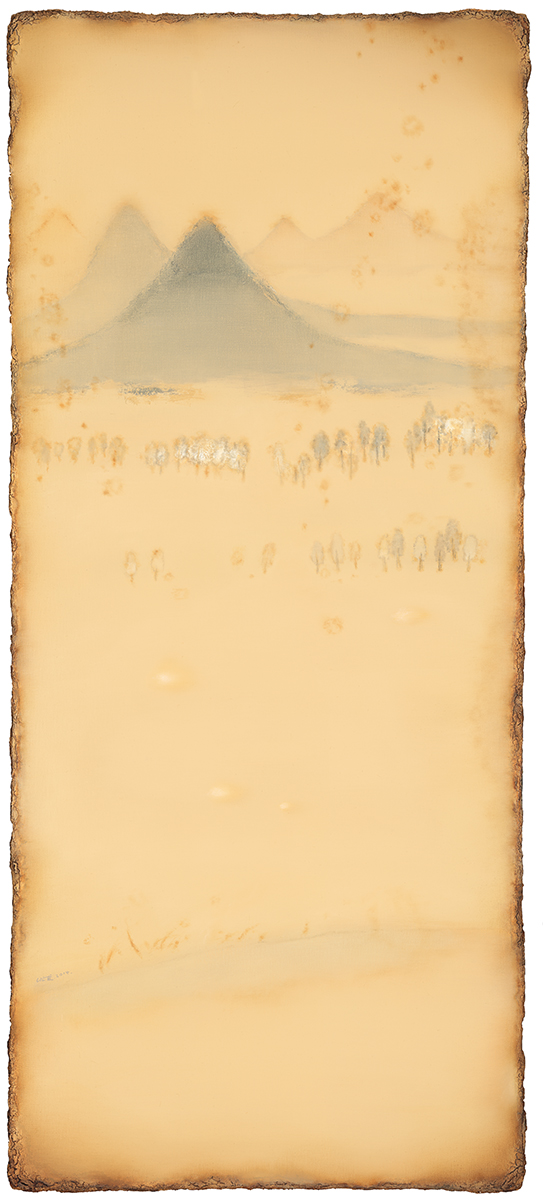
"Mt. WenⅠ" Oil on Canvas 272×122cm 2014
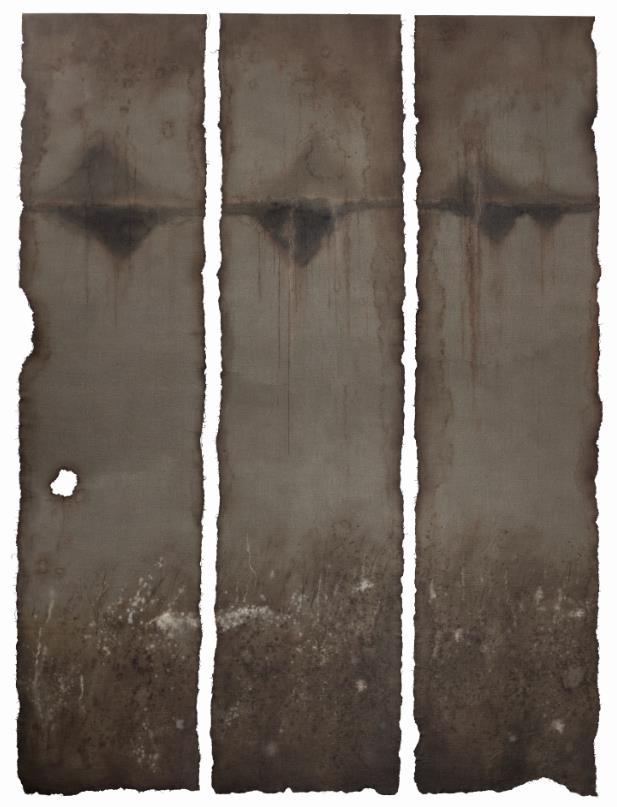
"The Mountain behind" Oil on Canvas 472×116cm×3 2019
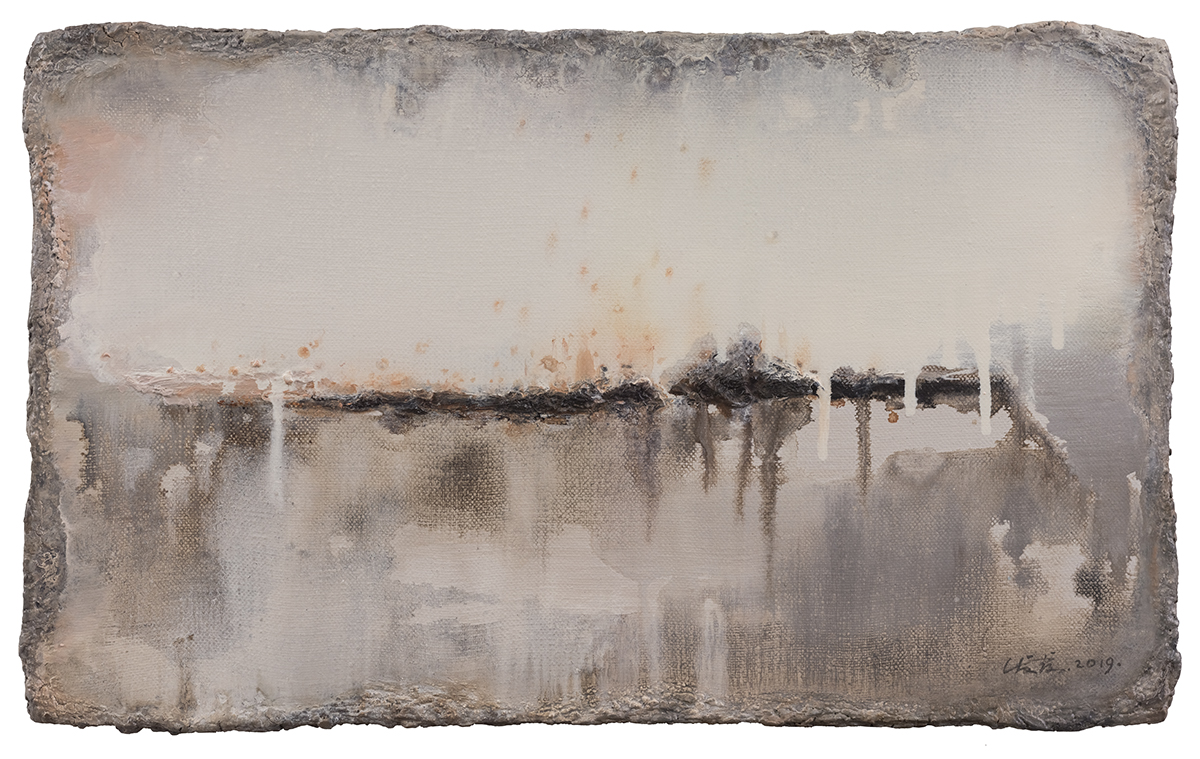
"The Scenes" Oil on Canvas 34×56cm 2019
In recent years, from the depiction of people and objects to the natural landscape and pure color expression, Chen Shuxia's creation has become increasingly abstract, and the narrative in the paintings is gradually dispelled. When it comes to the discussion on the weakening of the narrative in paintings, Chen Shuxia said frankly that, whether abstract or figurative narrative explanations she will plunge herself into an invisible abyss. Moreover, while one who is greatly obsessed with the integration of art expression and technology could forget the original intention of art, the abstract expression can often represent the more unknown. For Chen Shuxia, what she worries about most is to give a "standard answer" in her creation, because it must be contrary to artistic creation. The abstract expression allows her to make intuitive choices in her creation.
The Edge
“What kind of emotions can stay in the neglected sites, and gather at the margins almost next to the external part of the painting, cramped and exhausted, also sheltering the uncertain look. Crowded on these narrow margins, the lust and restraints can hardly breathe. Under helpless circumstances, it is lust that finds a shelter for the rolling heart and also pretends nothing has happened.”
From Chen Shuxia’s personal statement “Margin” in 2019, it is obvious to see that the “edge” of paintings contains her repressed emotions, controlled desires, dazed expression, and fear, while many distracting thoughts flow in all directions following the brush lines and spreading colors and eventually converge on the painting. The edge indicates a gesture of control.
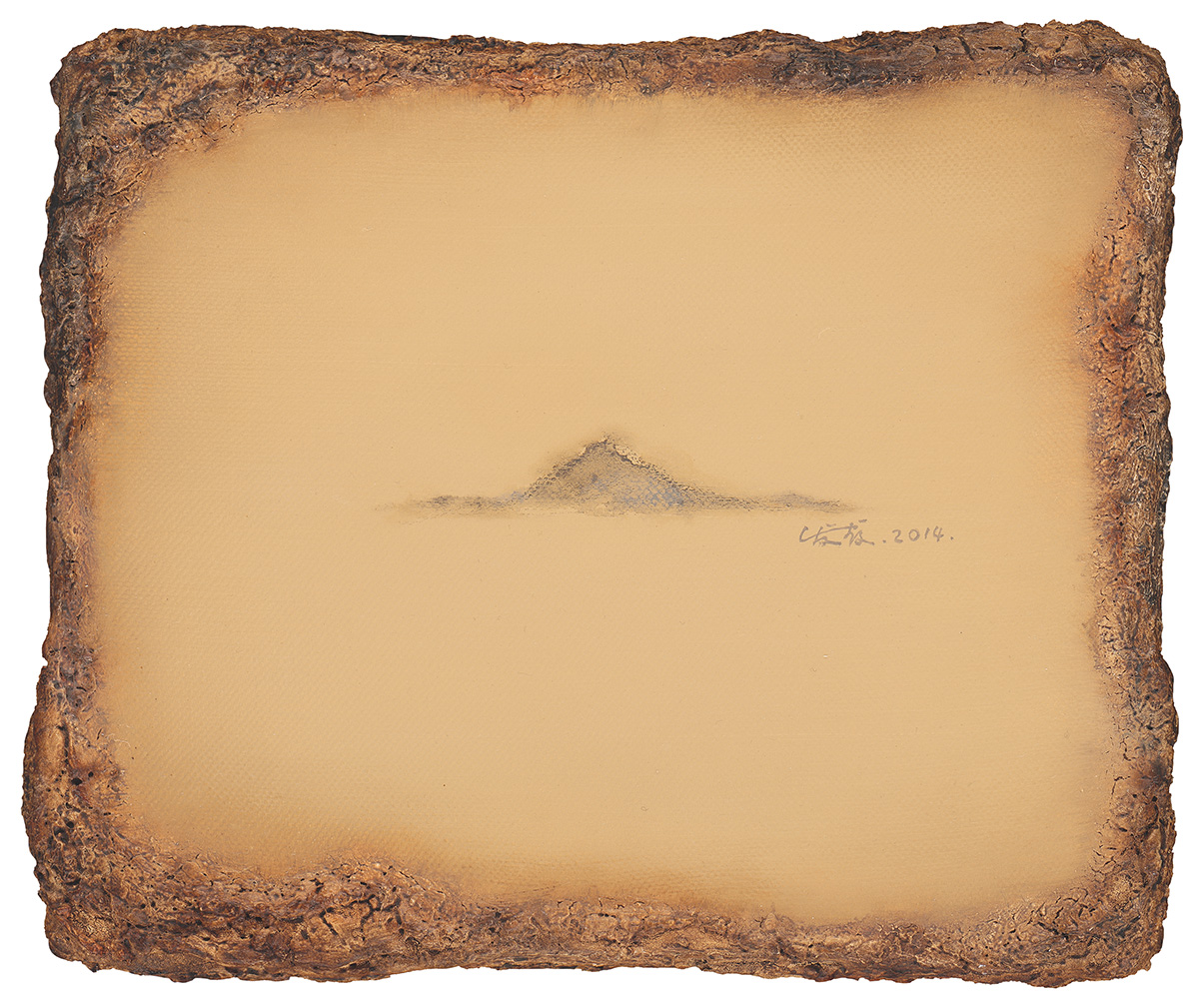
"Window" Oil on Canvas 28×33cm 2014
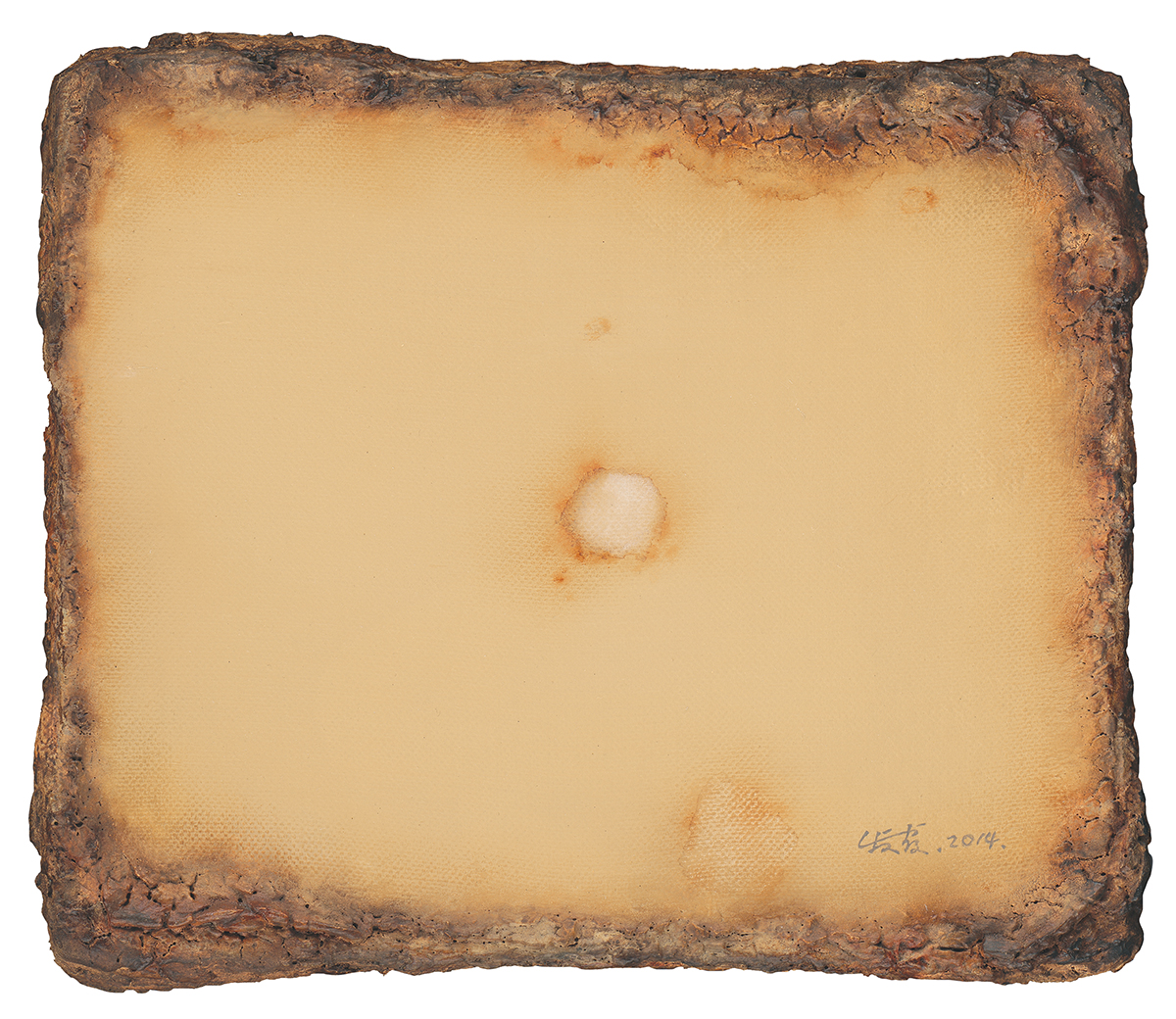
"Sheet", Oil on Canvas 28×33cm 2014
Viewing the texture of chapped, superimposed, and burnt material, Lu Hong, when discussing the treatment of the edges in Chen Shuxia's recent works, believes that “the visual effect will always remind people of the historical relics offering a rich experience.” Initially, Chen Shuxia focused on the edges as she researched the concept of "boundary" in her creation. The expressions and possibilities that can be derived when the language and consciousness of painting extend beyond the picture are more attractive and moving to Chen Shuxia. She loves this undefined, illusory and unspeakable working state. In fact, in Chen Shuxia's early works, although the textures such as chapped, superimposed, and burnt have not yet appeared, we can already perceive her careful handling of edges in the paintings.
It seems that “the edge” in the painting has become Chen Shuxia’s name-card, which attracts various critics and art press to explore and discuss this again and again. When CAFA ART INFO asked about the processing of the edges in her images again, Chen Shuxia cautiously and slightly felt distressed to express her concern: “I will feel a little uneasy about others seeing my work as deliberately emphasizing these formal languages because it is not my original intention to pursue language forms and image processing.” In Chen Shuxia’s viewpoint, things that she loves and attracts herself must be studied for a long time and intensively, even if sometimes it may cause her to fall into her own world due to emotional investment. From her perspective, expressing the heart is the most important trait of an artist.
"Sinopia", Oil on Canvas 48×48cm 2015
Identity
Besides being an artist, Chen Shuxia also works as a professor in the School of Art Management and Education at CAFA. During her daily life, she is a wife as well as a mother. Shifting between the diversified identity, Chen Shuxia is always trying to construct an attitude of alienation and secrecy. Within the same generation of female artists, Chen Shuxia is doubtless firm and gentle-natured. When retrospecting her art career, she mentioned that for a period of time, she intentionally placed her mind in the edge of her picture to calm herself down, and to be away from the excitement to seek objectivity. In Chen Shuxia's view, this stage is an important node of self-consideration.
Although included in the list of "female artists," Chen Shuxia seems to always maintain an objective and calm distance from this identity. She did not indulge in this label and expressed this roughly in her paintings, but continued her delicate perspective and expression in daily life in regards elements and emotions. She has repeatedly emphasized that as an artist, artistic expression is the priority and gender is what follows. Nevertheless, she does not deny that the delicate quality of female perspective may affect the concept and direction of her creation. The viewers can indeed receive her feelings on life through the picture, and thus give birth to their own magnificent imagination.
In the essay “Margin”, Chen Shuxia says, “I admire those who can live their lives at a maintained posture, as if how to dress and how to speak were all fixed...for them, movement is less than surprising, as it is merely blended into a meaningless account of life.” It is precisely the attitude that Chen Shuxia takes in everyday life. When it comes to her artistic creation, instead of directly discussing the magnificent propositions and relationships in the era of great changes, she tells about the historical moments and the present from the memories of life over many years. For Chen Shuxia, managing the canvas that bears the landscape in front of her eyes is to create in the present as well as live in the present.
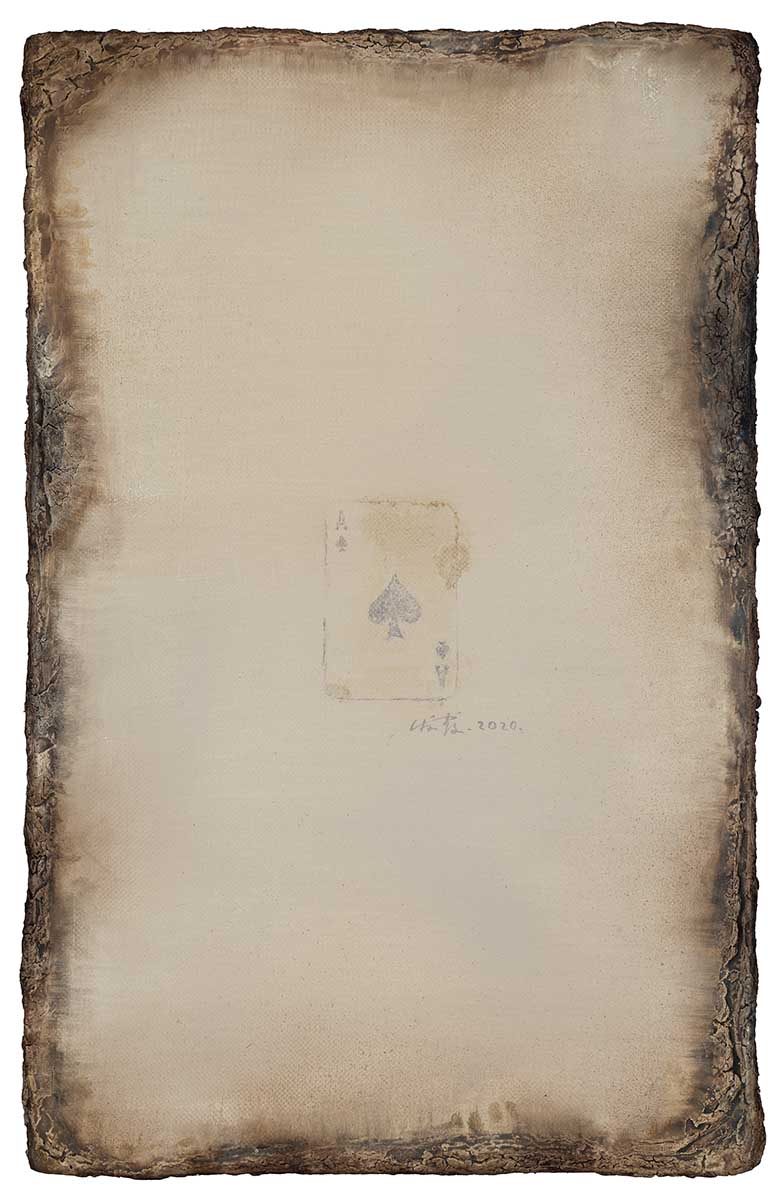
"Winning Cards—Spades A" Oil on Canvas 56×36cm 2020
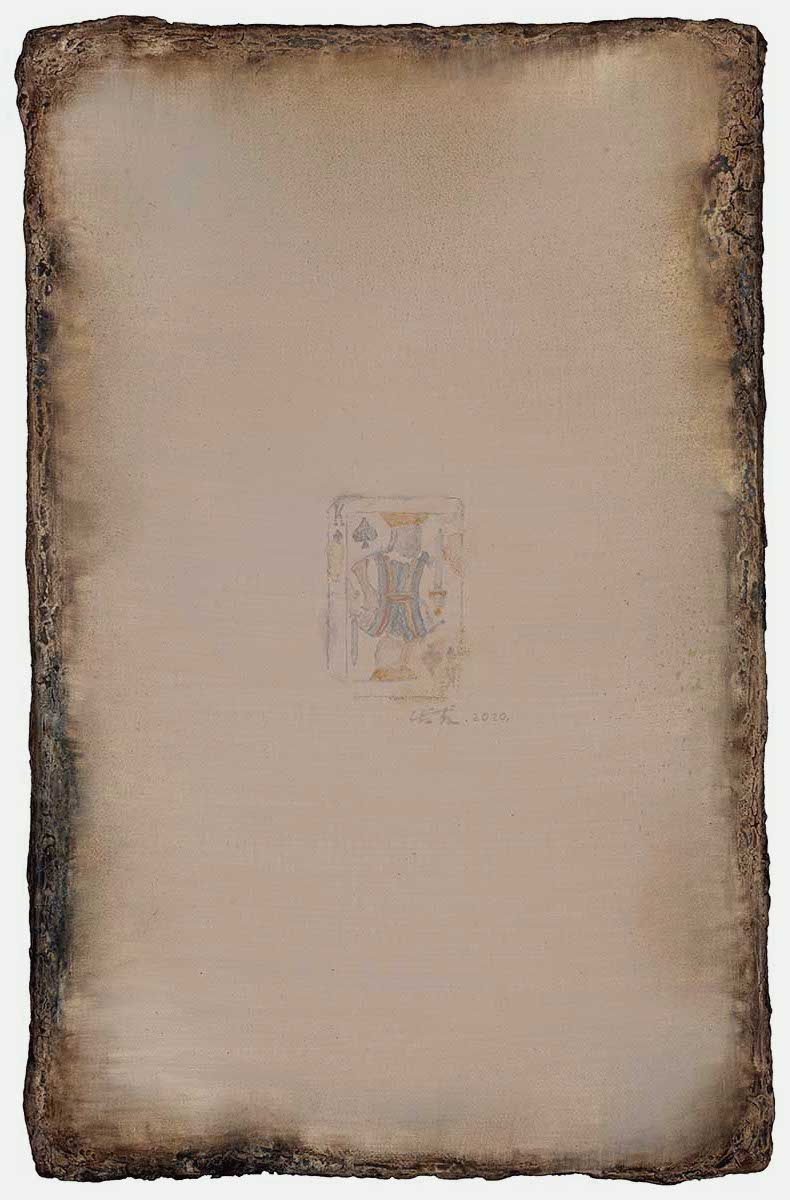
"Winning Cards—Spades K" Oil on Canvas 56×36cm 2020
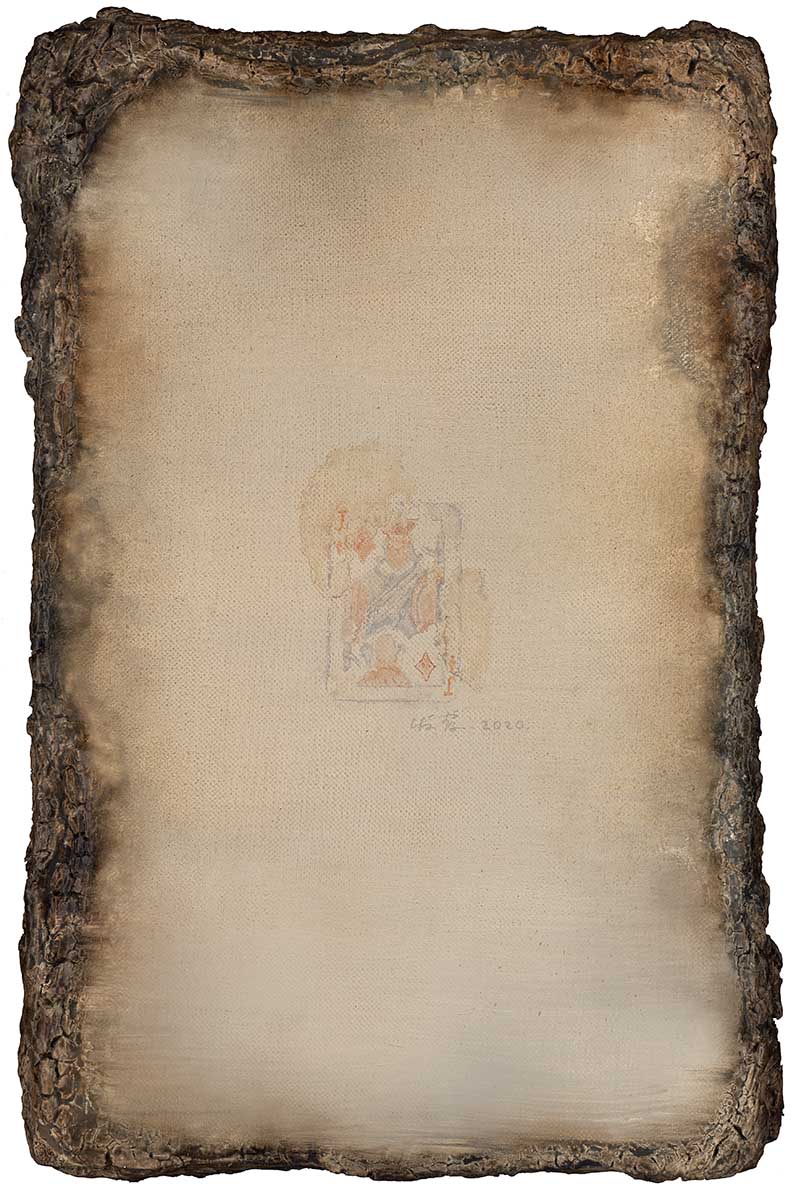
"Winning Cards—Square J" Oil on Canvas 56×36cm 2020
In 2020, compared with the sadness, nothingness, and contradiction buried under the colors and composition in the past, the “Winning Cards” series seems to express a sense of relief and open-mindedness. It tells a life attitude that the artist attempts to avoid remaining cautious in words and deeds thus she begins to enjoy making decisions based on intuition occasionally. Also, it conveys her creed that one should try not to always consider the rules and odds, but believe that each of us holds a “winning card” in hand.
Interview with Artist Chen Shuxia
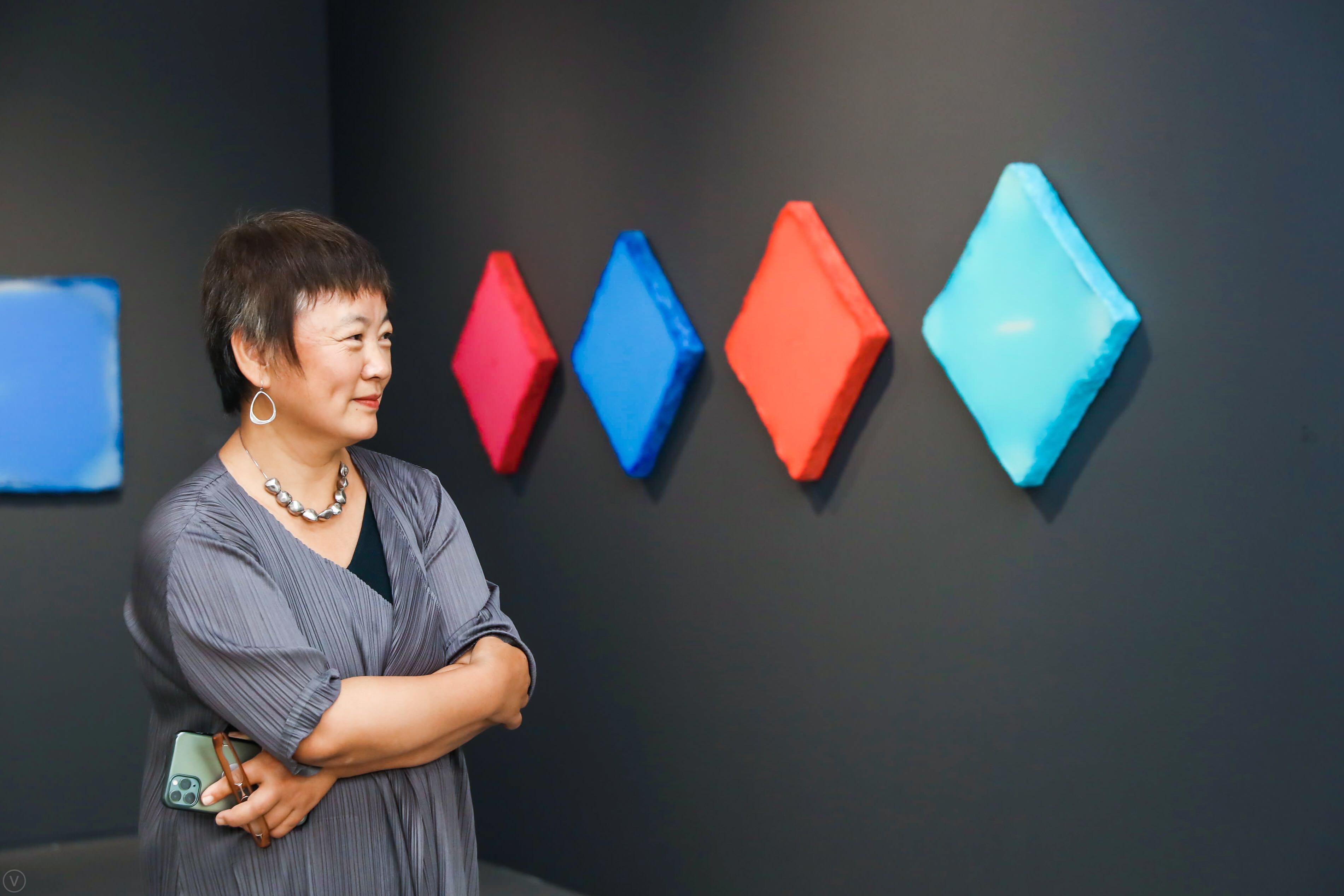
Artist Chen Shuxia at the exhibition site of "Winning Cards"
CAFA ART INFO: Hello Prof. Chen! Congratulations on the opening of your solo exhibition. First of all, can you briefly introduce the theme of this exhibition and the creative background and original intention of the series of works of “Winning Cards”?
Chen Shuxia: Actually, we decided to use “Winning Cards” as the exhibition title by accident and I did not consider much about it at first. I always feel that under the background of the times, we have fewer and fewer opportunities to make choices, so we will care about what we are going to do and precisely calculate gains and losses. In our daily lives, we must be cautious in our words and actions, for fear that the winning cards we hold will develop towards a bad result in the end. As far as my personal state is concerned, this period of time is more about doing things intuitively. The moment I make decisions may be subconscious most of time. This process of building up in thinking can be considered as a kind of enjoyment.
This exhibition follows last year's solo exhibition “The Edge” at Meilun Art Museum, Changsha. The pandemic has brought an unprecedented impact on society, the economy and international relations. Even our living habits have to be re-adjusted, which is like a reshuffle. I think I must believe that the cards I hold are winning cards in order to play cards with confidence. Whether the cards are played according to the rules, how many odds do we have, all these are actually not important. Instead, the happiness you enjoy in the process of playing the cards is what counts.
Exhibition View
CAFA ART INFO: Is there any continuity between the new works presented in this exhibition and your previous works? Has there been any change in the proposition you are concerned about?
Chen Shuxia: In fact, my concerns and the so-called propositions have always been continuous. Although I personally feel that there are differences or substitutions between my thinking before and after, in the eyes of outsiders, it may still be a series of thinking. For example, from the earliest "primary colors" stage to last year's exhibition “The Edge” in Changsha, from the theme of this period of time, I have always wanted to put my heart on the edge. I feel that the marginalized edge may cause me to calm down, and stay away from excitement and this pursuit can make me become objective. It seems that looking back at the past is just to enable me to find a node and it does not mean that using logic you have to sort out the reason that inevitably leads to a personal expansion for this.
CAFA ART INFO: From your early creations, you seemed to begin to carefully treat the edges of the pictures. Regarding the works exhibited at this time, we can also see your careful treatment of the edges. There are layers of cracks, peeling and other effects, which create a visual contrast with the flat, soothing, poetic white space in the central area in your paintings. How does this visual language correspond to your psychological feelings when you create? Is there any special implication for this treatment?
Chen Shuxia: In the process of completing this series of works, such as the edge treatment you just mentioned, cracking or peeling and other visual effects would unnaturally replace the central focus part with these marginal areas. In fact, I am also a little worried. I will feel a little uneasy about others seeing my works as deliberately emphasizing this formal language because it is not my original intention to seek language forms and pursue image processing. I hope to frankly face and deal with the relationship between nature and my heart. Expressing character is the most important thing for an artist, but sometimes we will unconsciously fall into our own spiritual world due to the great emotional investment, or pay too much attention to the outside world's evaluation of ourselves. In considering the processing of the margins, it may originate from the boundary concept of my creative thinking. The consciousness of painting can extend to the outside of the painting which becomes more inspiring and attractive to me than the portrayal within the prescribed scope. I like to enjoy and pursue the unidentifiable, illusory and unspeakable working state.
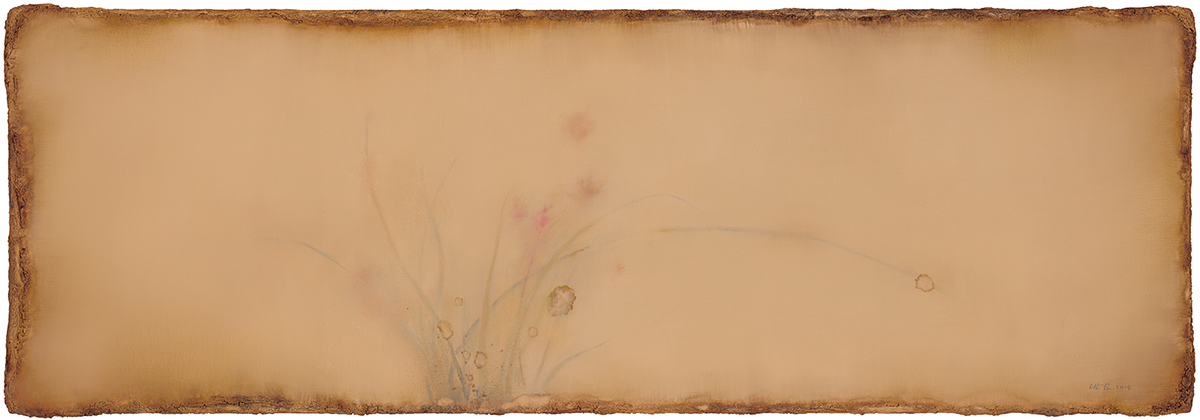
"Aroma Strikes" Oil on Canvas 70×202cm 2019
"Aroma Strikes (Details)" Oil on Canvas 70×202cm 2019
CAFA ART INFO: Your recent creations seem to be increasingly abstract and less narrative. Is there any special intention for this shift? What do you want to convey?
Chen Shuxia: Yes, it can be understood as more abstract and less narrative in my painting. Although I am not opposed to the narrative in the picture, from my personal point of view, I still hope to weaken this narrative expression, because I think in the picture, whether it is the concrete texture or the plot description, these expressions will make me fall into an invisible abyss and I cannot extricate myself as the technical training is a way that the harder I try, the more I feel that it is not enough. The integration between artistic expression and technology will cause us to forget the original intention of art. In fact, traditional Chinese painters have already solved this issue. The famous Chinese sayings from “looking at the mountains and lakes, and you indeed see mountains and lakes” to “looking at the mountains and lakes, and you actually perceive something else” can explain this truth. There are many unknowns in abstract expression. As far as painting is concerned, what worries me most is to directly present the answer in front of the spectators. I think that as long as it is the standard answer, it is contrary to artistic creation. This principle is so strong.
CAFA ART INFO: In your all-time creations, we can see that you are using oil painting techniques to present sort of artistic conception and emotions behind Chinese ink paintings. You also mentioned in many previous interviews that you have been exploring and pursuing the integration of oil paintings and Chinese paintings. During this process, did you have any new feelings and experiences in the exploration of these two creative media? Have you encountered any limitations or challenges?
Chen Shuxia: We are often prone to falling into a misunderstanding, that is to view the way of painting and the medium of painting as excessively important, much more important than feelings. We have already set the direction for the distinction between painting types and gradually, the fun of creating is embedded in these technical rations. Traditional Chinese painting expresses feelings with specific materials, and more than this, it is a way of looking at the world. From my personal likes and dislikes, I appreciate the way ancient society viewed the world. It doesn't matter which way it is expressed. To express the traditional artistic conception in oil painting is nothing more than to travel within one's own feelings to ancient times to look at the world today. Confronting today, to what extent can we unhurriedly and poetically express life?
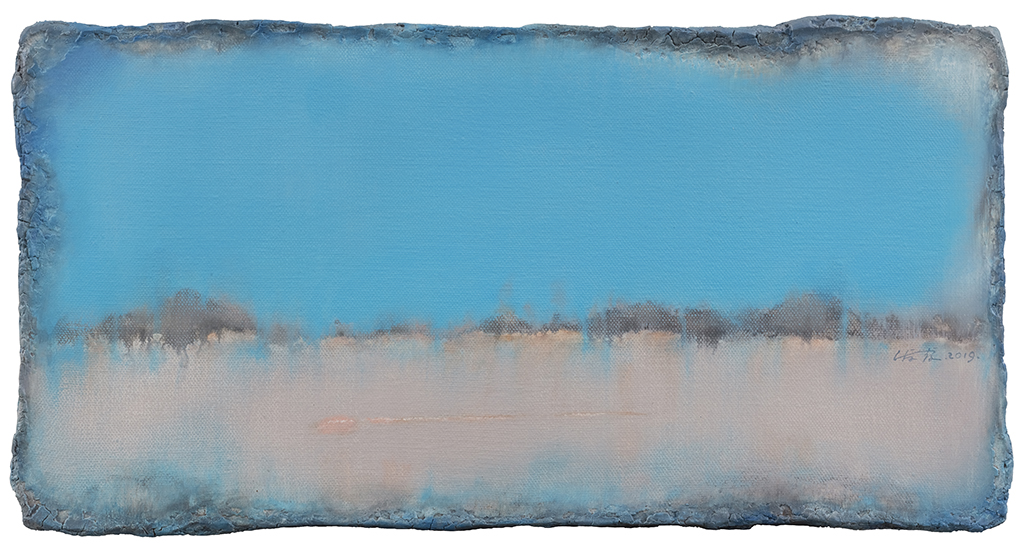
"The Brush Washer" Oil on Canvas 32×61cm 2019
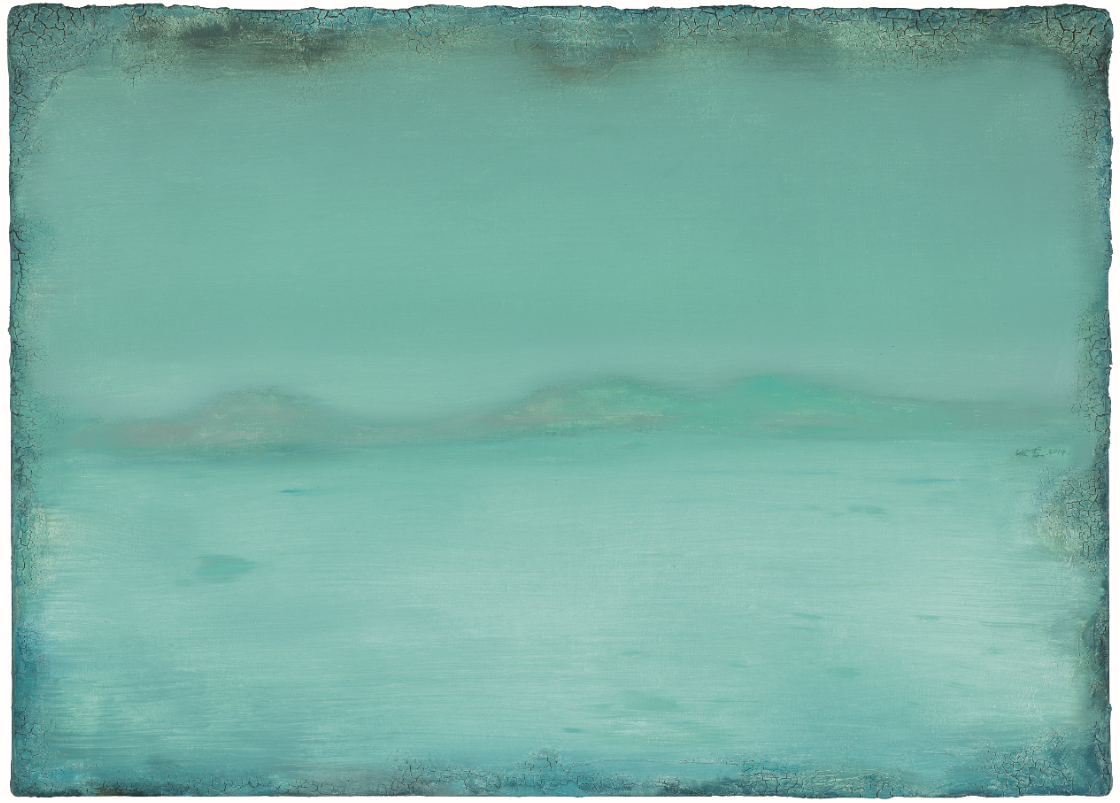
"Three Greens" Oil on Canvas 80×110cm 2014
CAFA ART INFO: The year 2020 is unique throughout the entire world and everyone. This year, we also saw too many artworks and exhibitions that reflected the grand theme of the pandemic and the current situation in society. In the context of 2020, is your artistic creation also reflecting on the present in your own special way? In crisis and turmoil, how do you see the function and significance of art?
Chen Shuxia: I am not opposed to thematic creation of major events or grand themes to express human concerns. Personally, artistic expression mainly relies on infection and the motivation and moving that can bring empathy. During the pandemic, I was really touched and grateful, but my scientific research ability was just in painting. There are so many unknown things in the world. How to express a person's nature is not a simple appeal and agitation. When reality challenges all of our cognition, or when all of us press the pause button, we are so fragile and too much uncertainty is waiting for us. For myself, no matter what my emotions are, painting is the best prescription.
CAFA ART INFO: In the past year or two, a lot of exhibitions of important Western female artists have been introduced into China, such as Louise Bourgeois, Niki de Saint Phalle, Sarah Lucas, etc., which have attracted considerable attention and also let more ordinary audiences begin to understand "female artists" and their works within a Western context. Will this trend or phenomenon have some changes or influences on local female artists in their creation or communication with the audience?
Chen Shuxia: I like the works of the artists you mentioned very much. As an artist, artistic expression is the priority and gender is what follows. Of course, the unique delicate nature of women's perspective may affect the thinking and direction of my creation. Personally, what I can experience is the sensibility that is closely related to my life. This sensibility is not merely from gender concerns, but also my thinking about humanity. We want to live, to seek survival. In society, are the attributes of individuals enlarged or limited? How many of us are consuming our lives? Are we sorry about this world? Sometimes a lot of pessimism may be hidden behind the gorgeous colors of my painting, which is unpleasant. But I think that is human, and artists can be more sensitive in this aspect.
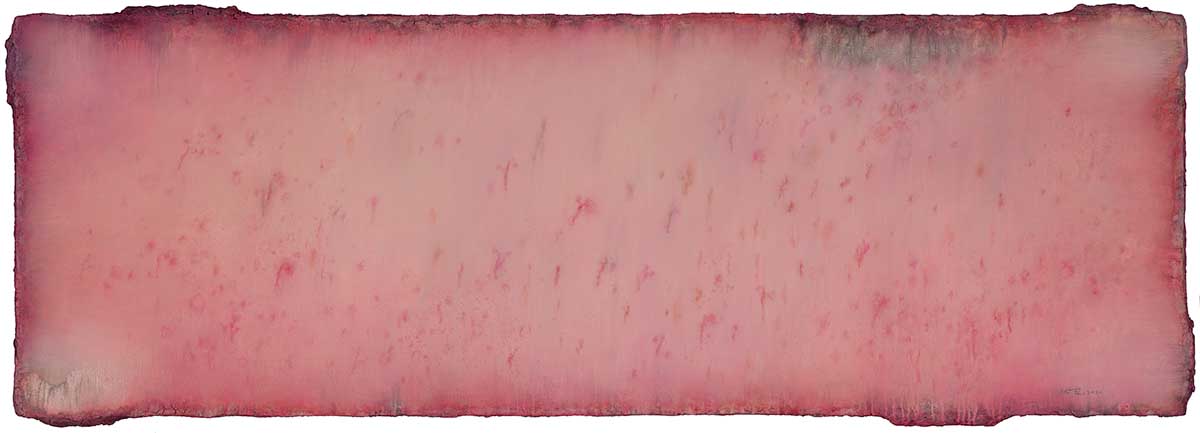
"Blossom Season" Oil on Canvas 73×204cm 2020
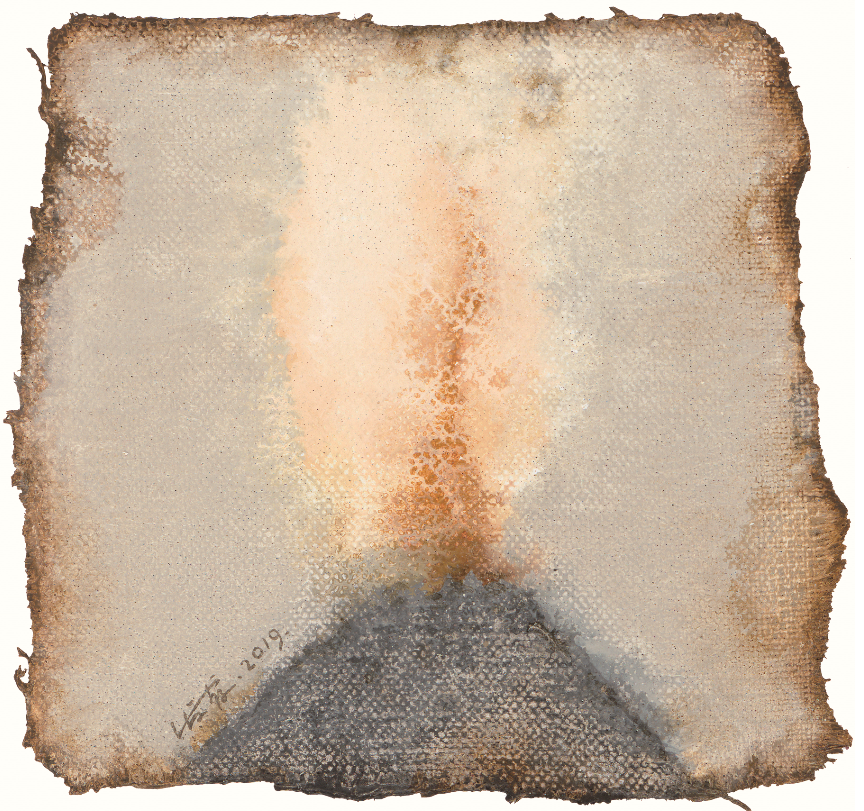
"Pieces of Words No.2" Oil on Canvas 20×23cm 2019
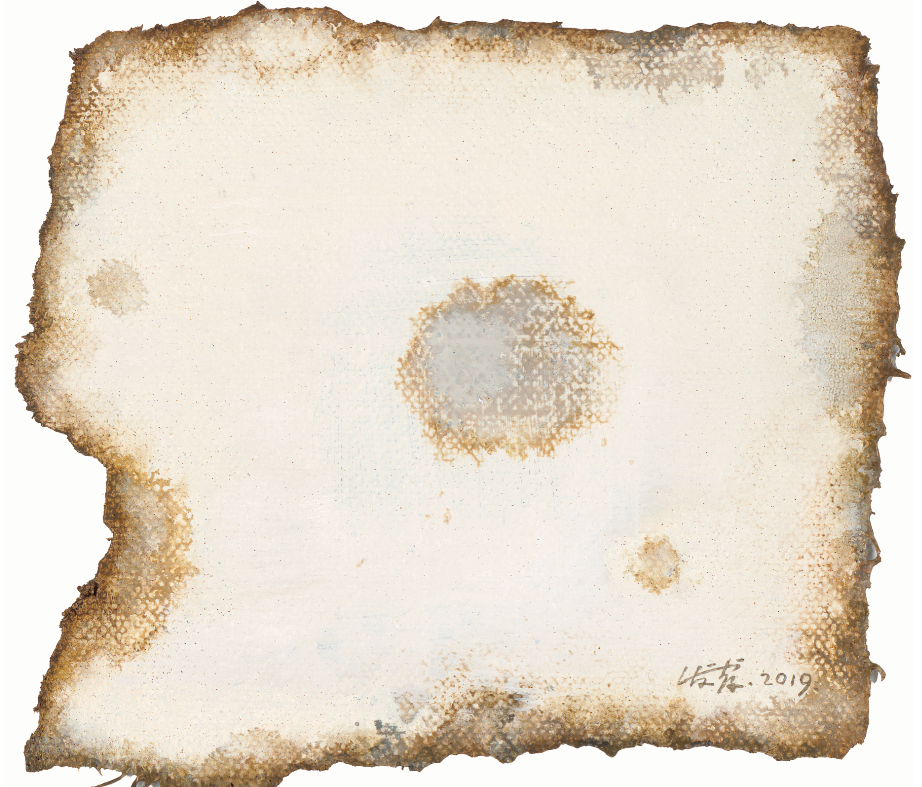
"Pieces of Words No.8" Oil on Canvas 20×23cm 2019
CAFA ART INFO: As an artist, you are also working within the educational field in CAFA. At this impetuous and chaotic node, can you give some advice to art-related students and young artists?
Chen Shuxia: Seeing some very talented works of young artists, I love them from the bottom of my heart. I just hope that this era can leave more room for creation. Experience is indeed important, but too much emphasis on the meaning of experience will naturally reduce the possibility of creation. The creative environment would be better if we leave more space for ego and less following of the routine. By doing so, some works showcasing eagerness for quick success is naturally ignored.
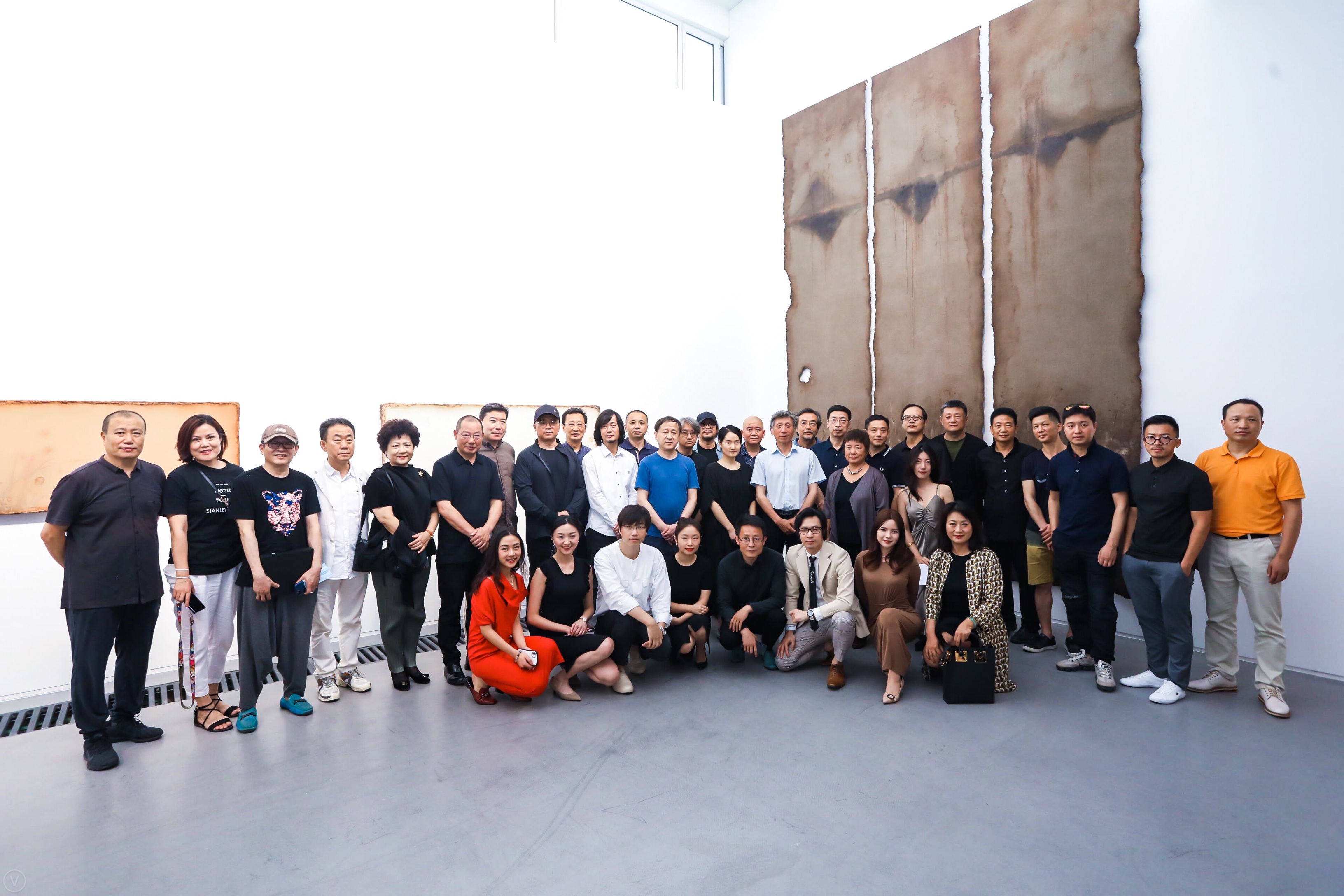
Group Photo of Honored Guests


View of Opening Ceremony
Text and interview conducted by Emily Weimeng Zhou
Edited by Sue/CAFA ART INFO
Photo courtesy of Asia Art Center.
Reference:
1. Yin Shuangxi, “Midnight Wind—The Primary Colors of Chen Shuxia", 2006.
2. Ji Shaofeng, “Lust of Color—Comments on Chen Shuxia’s Paintings” from The Edge—Chen Shuxia, 2019.
3. Zhu Qingsheng, “Forget the Form—A Critique of the Paintings of Chen Shuxia”, The Edge—Chen Shuxia, 2015.
4. Chen Shuxia, “Margin”, The Edge—Chen Shuxia, 2019.
5. “Winning Cards” Exhibition Texts, Asia Art Center, 2020.

Winning Cards
— Artworks by Chen Shuxia
Artist: Chen Shuxia
Duration: 2020.8.15 - 2020.10.11
Venue: Asia Art Center (Beijing)
Dashanzi 798 Art Dist., No.2, Jiuxianqiao Rd., Chaoyang Dist., Beijing



